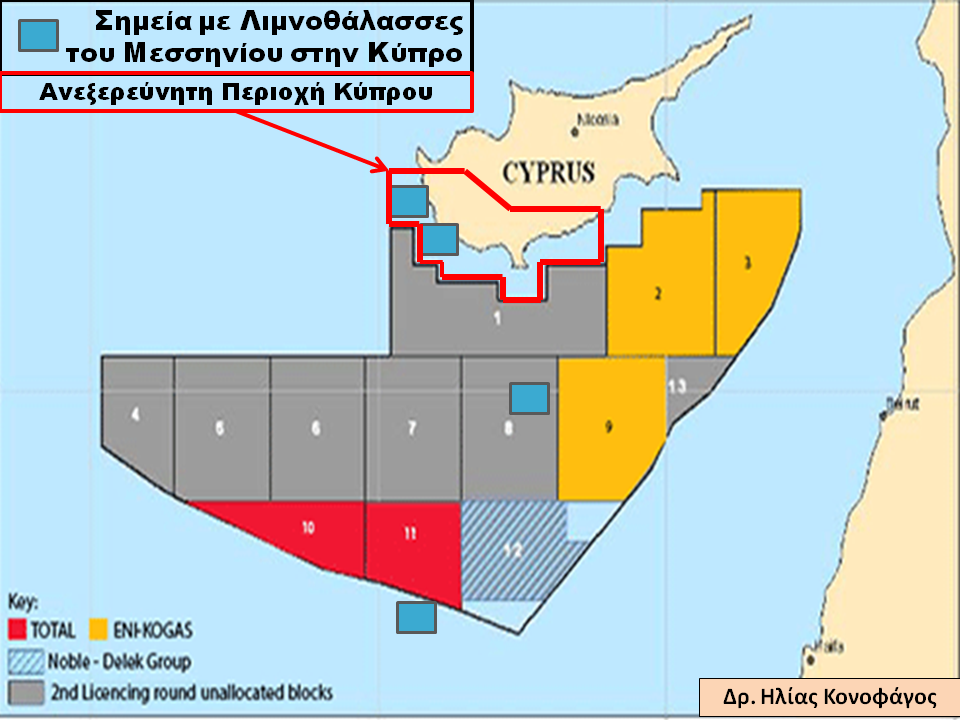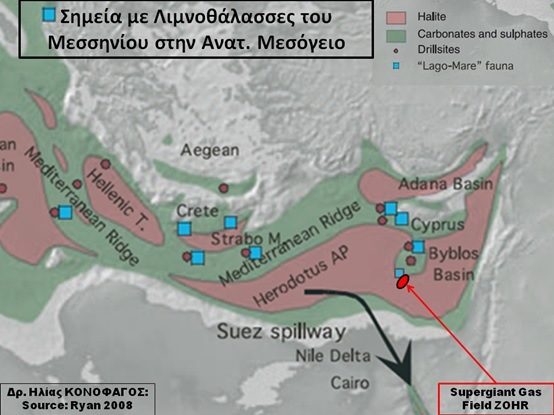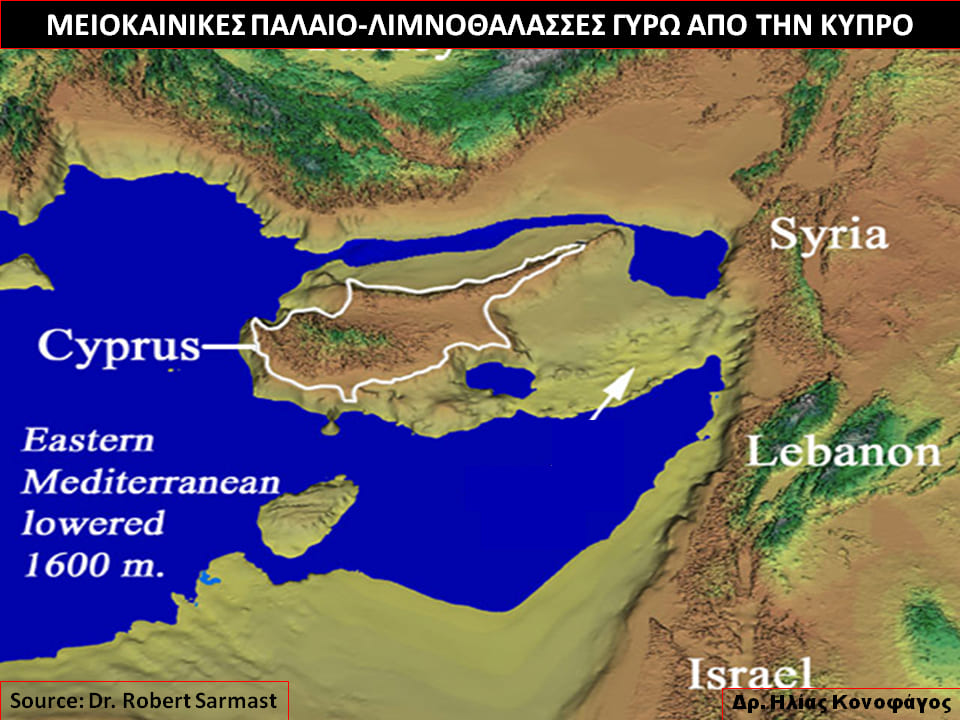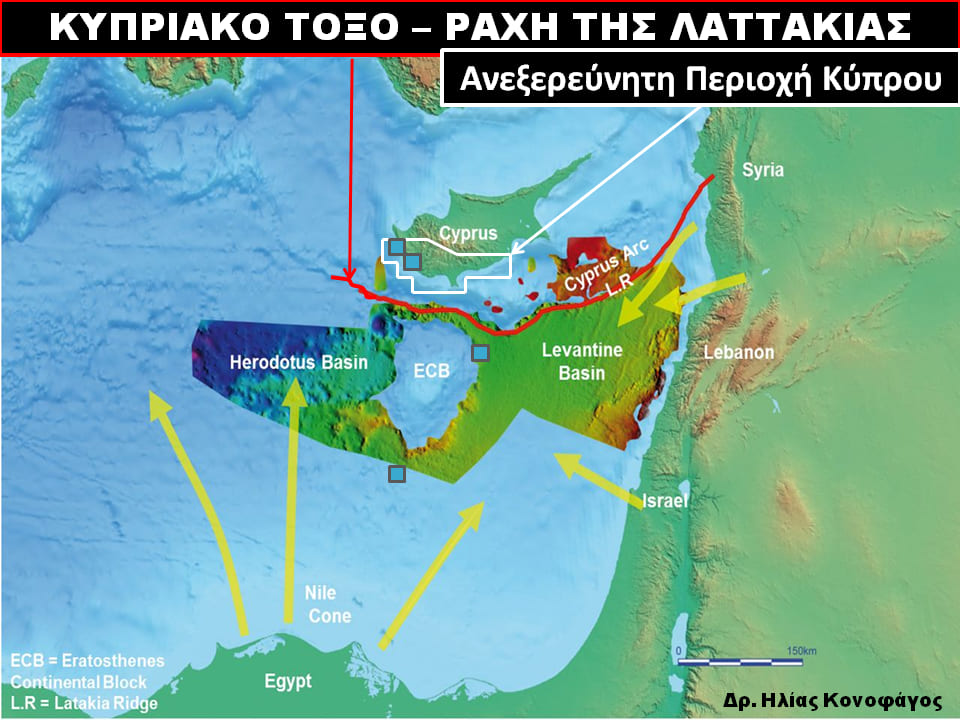21931 - Innovative Research in Cyprus re: zohr type reserves
E. Conophagos, N. Lygeros
Translated from the Greek by Athena Kehagias
The Republic of Cyprus has recently signed an important agreement with the American company NEOS GeoSolutions, regarding the evaluation of the mineral resources through the geophysical prospection method, of sections of the shallow coastal fields and the inland areas of Cyprus.
We should note, that both the coastal and the inland portions which will be evaluated – according to our information – are located in unexplored research areas outside the 13 Cypriot marine plots already issued for research, (see. Fig.1).
The main objective of NEOS Geosolutions is to identify Zohr type target reserves, according to EMI’s new research model and even beyond that.
With some of our recent publications we have explained that such important karst limestone target reserves (reefs), are located in paleogeographic seacoast lagoons (edge of bioclastic lagoons), see. Fig.2 and Fig.3.
This research effort of NEOS Geosolutions, which will co operate with two well-known Lebanese companies, the, Energy & Environment Holding (EEH) and the, Petroserv, it’s expected to be extremely useful for the region and beyond that, since we will most definitely see expensions of their activity in the region.
It is expected for these companies to submit within approximately six months a study which will include:
• Three-dimensional (3D) cohesive synthetic petroleum-geological display of the southern and western Cypriot regions, which are in shallow uncharted sea waters, in conjunction with their neighbouring inland areas (Fig.1 and Fig.2).
• The companies will scan the areas (Fig.1) by aerial gravimetric, electromagnetic and hyperspectral recordings.
• The above results of the air recordings will be combined with the already existing geological, geophysical and drilling data of the wider region.
• The American company, in conjunction with the competent Cypriot Ministry of Energy, it’s planned, that they will sell that data to oil companies who are already interested in the results of this study.
We should emphasize here, that in the case that in future, these shallow and onshore areas, are issued through a concession round to oil companies for exploration and production of hydrocarbons, there will definitely be a need for those companies to conduct further both shallow sea seismic surveys (shallow water seismics) and neighbouring inland seismic recordings respectively.
For the location and the relevant mapping of drilling targets, there will be a need to interpretationally unify the sea fields, the shallow seas, but also the inland seismic recordings of the region.
The most important factor regarding the efford of the Cypriot government into detecting these new important targets, regards the promotion of the mineral wealth in a region highly disturbed, located near tectonic plate convergence points (north of the Lattakias Ridge ) similar to that of southern Crete (see. Figure 4) .
As it’s well known, in Southern Crete (ie the Mediterranean Ridge) there have already been identified paleo-lagoon zones, through research (see. Fig.2).
Of course the question always remains: when would the Greek Government eventually awaken, and will show an interested regarding the Southern Crete – even in a way of research- as the Cypriot side it’s already doing.
Although, through the tripartite, and Egypt’s dynamics, things are progressing effectively, without them even becoming aware.




